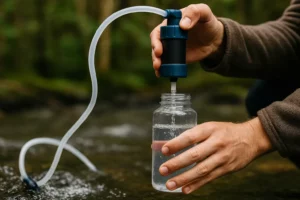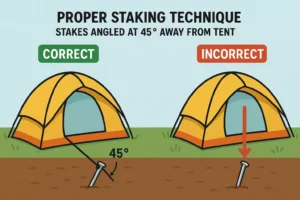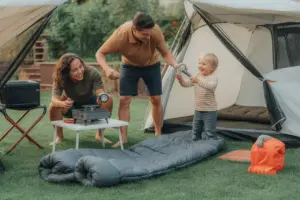Is Off-Trail Hiking Allowed? Understanding the Rules in National Forests
Picture this: you’re standing at the edge of a well-worn trail in a national forest, gazing at an untouched meadow that beckons you to explore beyond the designated path. The question that crosses every adventurous hiker’s mind is simple yet crucial: Can I legally venture off this trail? The answer isn’t as straightforward as you might think, and understanding the rules could mean the difference between an incredible wilderness experience and a hefty fine.
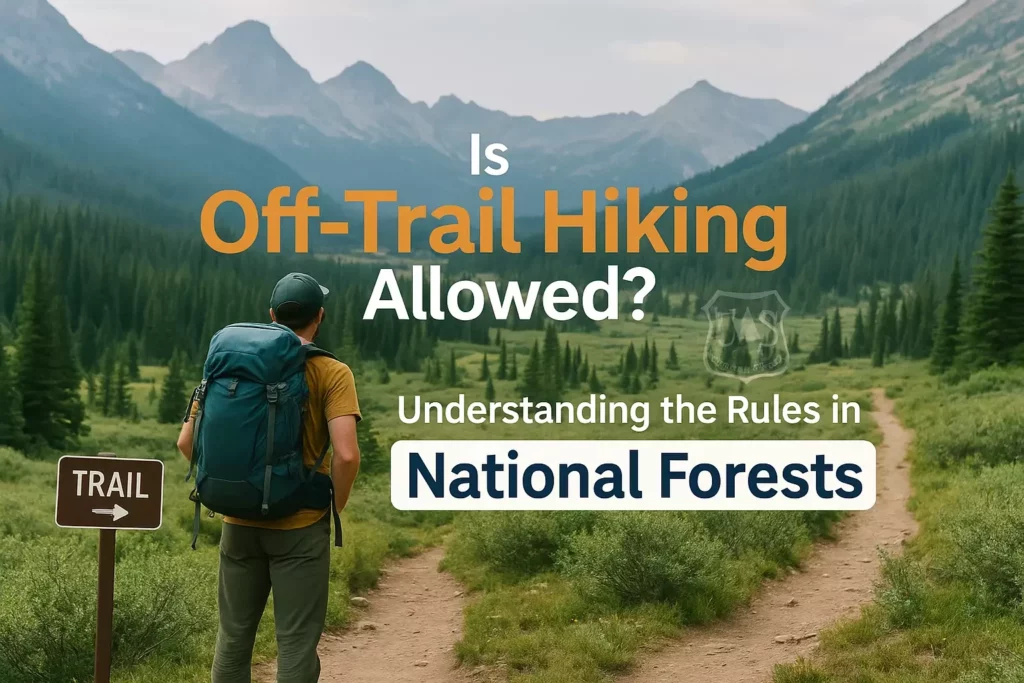
Off-trail hiking in national forests operates under a complex web of regulations that vary by location, season, and environmental conditions. While many national forests do allow off-trail exploration, the rules are far from universal, and ignorance of local regulations can lead to serious consequences for both hikers and the fragile ecosystems they’re trying to explore.
Key Takeaways
- Most national forests allow off-trail hiking, but specific restrictions vary by location and season
- Wilderness areas within national forests have the most permissive off-trail policies, while developed recreation areas often prohibit it
- Environmental protection zones, wildlife habitats, and sensitive ecosystems may have temporary or permanent off-trail restrictions
- Proper preparation and Leave No Trace principles are essential for responsible off-trail exploration
- Always check current regulations and conditions with local forest service offices before departing from designated trails
Understanding National Forest Land Classifications
National forests encompass 193 million acres across 44 states, but not all of this land is governed by the same rules. The U.S. Forest Service divides these areas into different classifications, each with its own set of regulations regarding off-trail travel.
Wilderness Areas 🏔️
Designated Wilderness Areas within national forests offer the most freedom for off-trail exploration. These areas are specifically managed to preserve their wild character, and cross-country travel is not only allowed but often encouraged as part of the wilderness experience.
Key characteristics of wilderness areas:
- No motorized vehicles or mechanical transport allowed
- Minimal infrastructure with few or no maintained trails
- Self-reliance and navigation skills are essential
- Permits may be required for overnight camping
General Forest Lands
The majority of national forest land falls into this category, where off-trail hiking is typically permitted but may be subject to seasonal restrictions or specific area closures.
Special Management Areas
These areas may have unique restrictions based on:
- Wildlife protection (nesting seasons, migration routes)
- Archaeological or cultural sites
- Restoration projects
- Fire danger levels
- Water quality protection
Federal Regulations vs. Local Forest Rules
Understanding the hierarchy of regulations is crucial for off-trail hikers. Federal laws provide the overarching framework, but individual forests have the authority to implement more restrictive rules based on local conditions.
Federal Framework
The National Forest Management Act and Wilderness Act establish the basic principles governing forest use. These laws generally support public access while requiring the protection of natural resources.
Forest-Specific Regulations
Each national forest publishes a Forest Plan and Motor Vehicle Use Maps (MVUM) that detail specific restrictions. Common local regulations include:
- Seasonal closures during wildlife breeding seasons
- Fire restrictions during dry conditions
- Area-specific prohibitions near water sources or sensitive habitats
- Group size limitations for off-trail travel
🏞️ National Forest Off-Trail Hiking Checker
When Off-Trail Hiking Is Prohibited
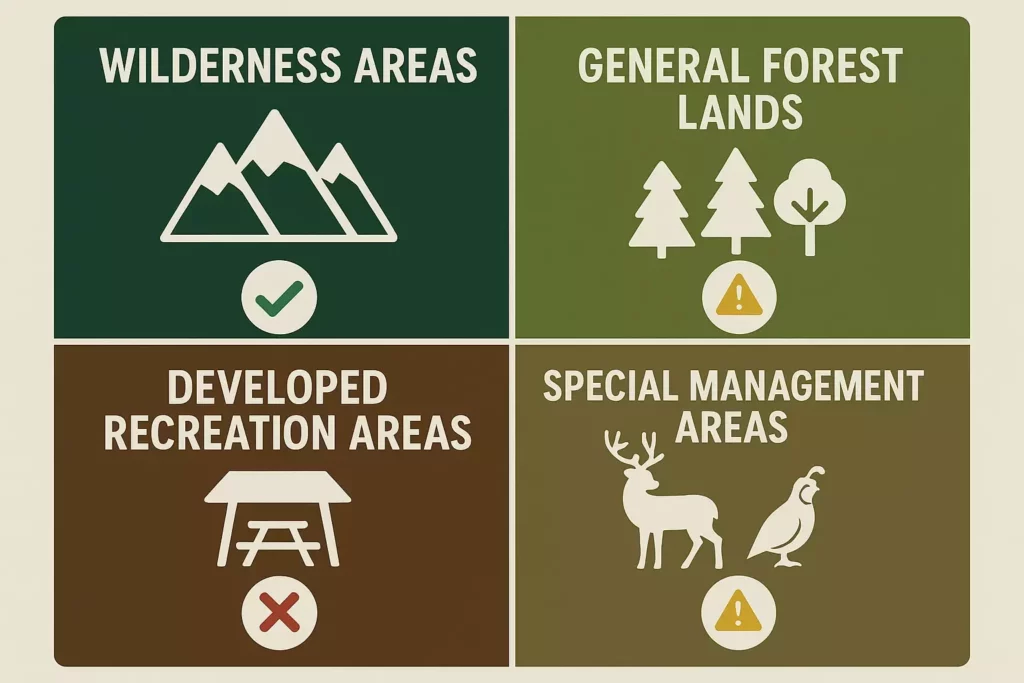
Several situations can result in complete prohibition of off-trail travel, even in areas where it’s normally allowed. Understanding these restrictions helps hikers avoid violations and protects sensitive ecosystems.
Temporary Closures 🚫
Emergency closures can happen with little notice due to:
- Wildfire activity or extreme fire danger
- Search and rescue operations
- Wildlife management activities
- Storm damage or hazardous conditions
- Research activities requiring undisturbed areas
Permanent Restrictions
Some areas have year-round off-trail prohibitions:
- Developed campgrounds and picnic areas
- Visitor centers and administrative sites
- Archaeological sites and cultural resources
- Water treatment facilities and infrastructure
- Private inholdings within forest boundaries
Seasonal Restrictions
Many forests implement time-limited restrictions to protect:
- Nesting birds (typically March through July)
- Migrating wildlife during critical periods
- Spawning fish in sensitive watersheds
- Fragile vegetation during growing seasons
- Winter wildlife habitat during harsh weather
Wilderness Areas: The Gold Standard for Off-Trail Exploration
Designated Wilderness Areas represent the pinnacle of off-trail hiking opportunities within national forests. These areas are specifically managed to preserve their wild character, making cross-country travel not just permitted but encouraged.
What Makes Wilderness Special
Wilderness areas are governed by the 1964 Wilderness Act, which mandates that these lands be preserved in their natural condition. This legislation creates unique opportunities for off-trail exploration:
- Minimal human impact regulations protect the landscape
- No motorized access ensures a primitive experience
- Limited trail maintenance encourages self-reliance
- Backcountry camping is typically allowed with proper permits
Popular Wilderness Areas for Off-Trail Hiking
| Wilderness Area | State | Size (Acres) | Off-Trail Highlights |
|---|---|---|---|
| Frank Church-River of No Return | Idaho | 2.3 million | Largest wilderness in lower 48 states |
| Ansel Adams Wilderness | California | 231,000 | Alpine lakes and granite peaks |
| Boundary Waters Canoe Area | Minnesota | 1.1 million | Water-based off-trail travel |
| Maroon Bells-Snowmass | Colorado | 181,000 | High alpine terrain |
| Olympic Wilderness | Washington | 876,000 | Temperate rainforest exploration |
Wilderness Permits and Regulations
Most wilderness areas require overnight permits, and some have day-use quotas during peak seasons. Key requirements include:
- Advanced reservations often necessary
- Group size limits (typically 12 people maximum)
- Leave No Trace camping practices mandatory
- Food storage requirements in bear country
Essential Preparation for Off-Trail Adventures
Venturing beyond marked trails requires significantly more preparation than standard hiking. The margin for error decreases dramatically when you leave established routes behind.
Navigation Skills and Equipment 🧭
Modern GPS devices and smartphone apps provide excellent backup navigation, but they shouldn’t be your primary method. Essential navigation tools include:
- Topographic maps of the area (waterproof versions recommended)
- Compass and knowledge of how to use it
- GPS device or smartphone with offline maps
- Altimeter for position confirmation
- Route planning skills and backup route options
When packing your backpack for camping, navigation equipment should be easily accessible and protected from the elements.
Safety Equipment and Communication
Off-trail hiking significantly increases risks, making proper safety equipment essential:
Emergency Communication:
- Satellite communicator or personal locator beacon
- Cell phone with backup battery
- Whistle for emergency signaling
- Signal mirror for rescue situations
First Aid Preparedness:
Creating a comprehensive first aid kit becomes even more critical when help may be hours or days away. Include:
- Expanded wound care supplies
- Emergency shelter materials
- Water purification tablets or filters
- Emergency food for extended delays
Clothing and Weather Protection
Weather conditions can change rapidly in backcountry areas, and off-trail travel often exposes hikers to more extreme conditions. Cool weather clothes for camping become essential even during summer months at elevation.
Layering System:
- Base layers for moisture management
- Insulating layers for warmth
- Shell layers for wind and rain protection
- Extra clothing for emergency situations
Leave No Trace Principles for Off-Trail Hiking
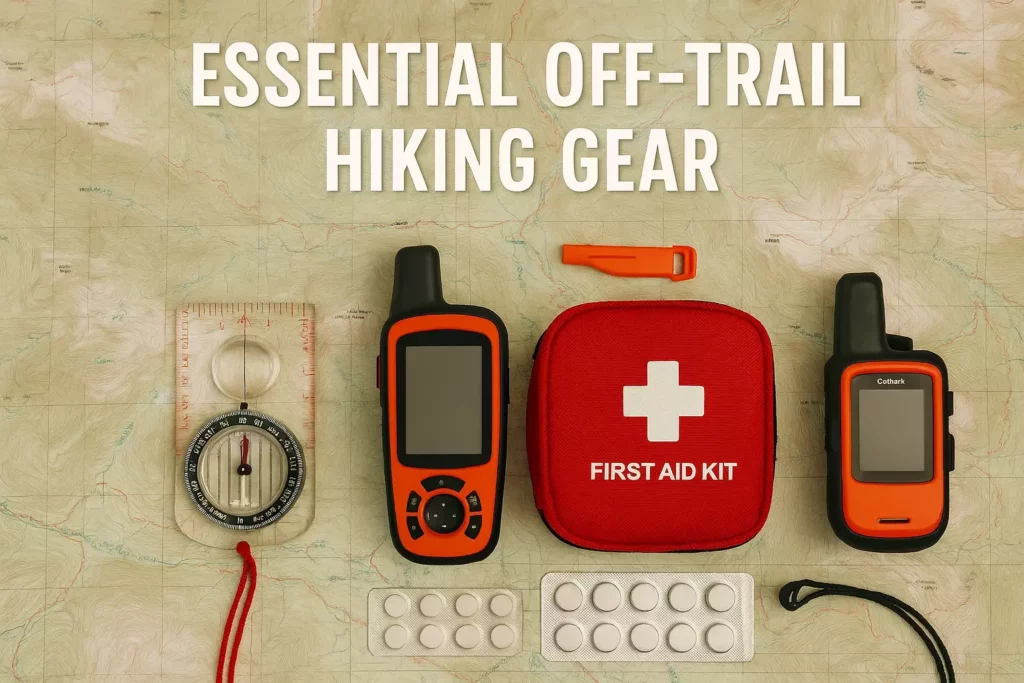
Off-trail hiking places additional responsibility on outdoor enthusiasts to minimize their environmental impact. The Leave No Trace principles become even more critical when traveling through pristine, unmarked terrain.
Plan Ahead and Prepare
Research regulations specific to your chosen area, including:
- Permit requirements and reservation systems
- Seasonal restrictions and closure information
- Group size limitations and camping rules
- Fire restrictions and cooking regulations
Travel and Camp on Durable Surfaces
When traveling off-trail, surface selection becomes crucial:
Preferred Surfaces (in order):
- Rock – Most durable, minimal impact
- Gravel – Good drainage, low vegetation
- Sand – Recovers quickly from use
- Dry grass – Better than wet vegetation
- Snow – Temporary impact only
Surfaces to Avoid:
- Wetlands and marshy areas
- Fragile desert crusts
- Alpine vegetation above treeline
- Stream banks and riparian zones
Dispose of Waste Properly
Off-trail areas lack the infrastructure of developed trails, making waste disposal planning essential:
- Pack out all trash, including organic waste
- Bury human waste 6-8 inches deep, 200 feet from water
- Use established fire rings or avoid fires entirely
- Strain dishwater and scatter 200 feet from water sources
Proper water purification for drinking becomes more important when accessing natural sources in remote areas.
Finding Current Regulations and Restrictions
Staying informed about current regulations requires checking multiple sources, as conditions can change rapidly based on weather, wildlife activity, and forest management needs.
Official Information Sources 📋
U.S. Forest Service Resources:
- Forest Service website (www.fs.usda.gov)
- Individual forest websites with local updates
- Recreation.gov for permit information
- Motor Vehicle Use Maps (MVUM) for area boundaries
Local Ranger Stations:
- Current conditions and recent changes
- Informal trail reports from other hikers
- Weather and fire updates
- Permit issuance and area-specific advice
Mobile Apps and Digital Resources
Several smartphone apps provide updated forest information:
- ForecastAdvisor for weather conditions
- Gaia GPS for offline mapping
- iOverlander for access point information
- Campendium for camping regulations
Checking Before You Go
Essential pre-trip research should include:
- Current fire restrictions and danger levels
- Weather forecasts for your planned dates
- Recent trip reports from other hikers
- Road conditions and access point status
- Permit availability and reservation requirements
Consequences of Violating Off-Trail Regulations
Understanding the potential penalties for violating forest regulations helps emphasize the importance of following established rules. Violations can result in both legal consequences and environmental damage that lasts for decades.
Legal Penalties and Fines 💰
Federal violations in national forests can result in:
- Fines ranging from $100 to $5,000 for first-time violations
- Court appearances for serious infractions
- Equipment confiscation in some cases
- Prohibition from forest use for repeat offenders
Common violation categories:
- Unauthorized camping in restricted areas
- Campfire violations during fire restrictions
- Wildlife harassment or feeding
- Damage to natural resources
Environmental Impact
The consequences of improper off-trail travel extend far beyond legal penalties:
Vegetation Damage:
- Trampling can kill plants and create erosion
- Alpine vegetation may take decades to recover
- Rare plant populations can be eliminated permanently
Wildlife Disruption:
- Nesting disturbance can cause breeding failure
- Stress responses affect animal health and behavior
- Habitat fragmentation from informal trail creation
Special Considerations for Family Off-Trail Adventures
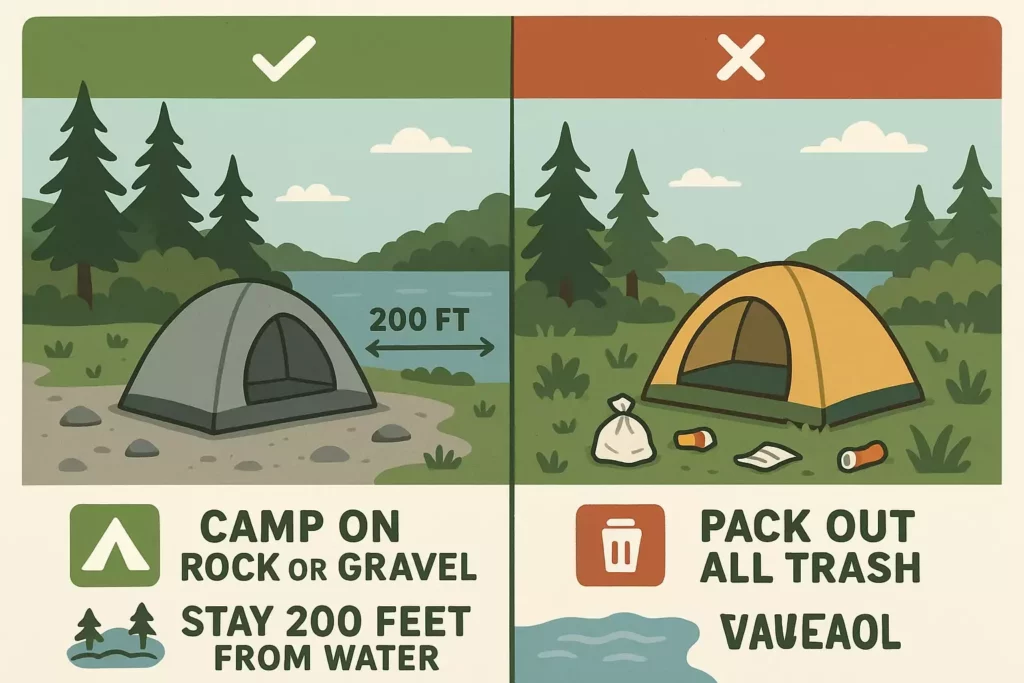
Off-trail hiking with children requires additional planning and safety considerations. While it can provide incredible educational opportunities, the risks and challenges multiply with young adventurers.
Age-Appropriate Off-Trail Experiences
Beginner Family Options:
- Short off-trail excursions from established trails
- Open meadows with good visibility
- Gentle terrain without cliffs or hazards
- Areas with cell phone coverage for emergencies
When planning family camping trips, consider starting with car camping in areas that allow short off-trail exploration before attempting longer backcountry adventures.
Safety Modifications for Children
Additional equipment for family off-trail trips:
- Brightly colored clothing for visibility
- Whistles for each child with clear instructions
- GPS trackers for older children
- Extra food and water for longer travel times
Communication strategies:
- Establish clear boundaries for exploration
- Practice navigation skills before the trip
- Create activities for kids that encourage observation
- Plan shorter distances than adult-only trips
Educational Opportunities
Off-trail exploration provides unique learning experiences:
- Wildlife tracking and identification
- Plant identification and ecosystem understanding
- Navigation skills and map reading
- Environmental stewardship and conservation ethics
Advanced Off-Trail Techniques and Skills
Experienced off-trail hikers develop specialized skills that enhance both safety and enjoyment of backcountry travel. These techniques separate casual off-trail walkers from serious wilderness explorers.
Route Finding Strategies
Terrain Association:
- Following natural features like ridgelines and valleys
- Using handrails such as streams or cliff bases
- Identifying catching features that prevent navigation errors
- Reading micro-terrain for efficient travel
Visibility and Weather Considerations:
- Planning for limited visibility in fog or storms
- Using back-bearings to confirm route accuracy
- Identifying escape routes in case of emergency
- Timing travel around weather patterns
Advanced Camping Techniques
Selecting Campsites:
- Evaluating drainage and flood potential
- Assessing wind exposure and protection
- Finding level ground without creating impact
- Ensuring water access while maintaining distance
Minimal Impact Camping:
- Using lightweight shelters that require minimal setup
- Cooking on portable stoves instead of fires
- Selecting appropriate sleeping bags for conditions
- Managing condensation and moisture
Emergency Preparedness
Self-Rescue Skills:
- Basic first aid and wilderness medicine
- Emergency shelter construction
- Signaling techniques for rescue
- Water location and purification methods
Consider developing a bushcraft survival kit specifically designed for off-trail emergencies.
Technology and Off-Trail Hiking
Modern technology provides powerful tools for off-trail navigation and safety, but it also creates new dependencies that can become dangerous if not properly managed.
GPS and Mapping Technology 📱
Advantages of Modern GPS:
- Precise location tracking in all weather
- Detailed topographic maps available offline
- Route recording for future reference
- Emergency location sharing capabilities
Limitations to Consider:
- Battery dependency in cold weather
- Signal interference in dense forests or canyons
- Screen visibility in bright sunlight
- Device fragility in harsh conditions
Satellite Communication
Emergency Communication Options:
- Personal Locator Beacons (PLBs) for life-threatening emergencies
- Satellite messengers for two-way communication
- Satellite phones for voice communication
- Smartphone satellite features in newer devices
Balancing Technology and Traditional Skills
Best Practices:
- Use technology as backup to traditional navigation
- Carry extra batteries and charging devices
- Practice with devices before depending on them
- Maintain traditional skills as primary methods
Regional Variations in Off-Trail Regulations
National forests across different regions have developed unique regulations based on local ecosystems, wildlife populations, and visitor use patterns. Understanding these regional differences helps hikers plan appropriate adventures.
Western Mountain Forests
Characteristics:
- High elevation wilderness areas
- Alpine environments with fragile vegetation
- Significant wildlife populations including bears and mountain lions
- Fire-prone ecosystems requiring seasonal restrictions
Common regulations:
- Bear canister requirements in many areas
- Campfire restrictions during dry seasons
- Group size limits in popular wilderness areas
- Permit systems for overnight camping
Eastern Deciduous Forests
Characteristics:
- Dense vegetation limiting visibility
- Extensive trail networks reducing off-trail pressure
- Smaller wilderness areas with higher use density
- Seasonal hunting creating additional safety considerations
Typical restrictions:
- Hunting season closures or restrictions
- Sensitive species protection during breeding seasons
- Water quality protection near municipal watersheds
- Archaeological site protection
Desert and Arid Land Forests
Unique considerations:
- Extreme temperature variations
- Limited water sources
- Fragile desert ecosystems
- Dangerous wildlife including venomous species
Special regulations:
- Water source protection buffers
- Desert tortoise habitat restrictions
- Cultural site protection in areas with Native American heritage
- Seasonal restrictions during extreme heat
Building Off-Trail Skills Progressively
Developing competence in off-trail hiking requires a gradual progression of skills and experience. Rushing into challenging off-trail adventures without proper preparation can lead to dangerous situations.
Beginner Progression Path
Step 1: Day Hikes with Short Off-Trail Segments
- Stay within sight of established trails
- Practice navigation in familiar areas
- Learn to read terrain and identify features
- Develop comfort with basic equipment
Step 2: Overnight Trips in Easy Terrain
- Choose open areas with good visibility
- Practice campfire cooking and camp setup
- Experience weather changes overnight
- Test equipment in real conditions
Step 3: Multi-Day Adventures
- Plan longer routes with multiple camping options
- Develop resupply strategies for extended trips
- Practice emergency procedures
- Build physical endurance for challenging terrain
Skill Development Areas
Navigation Proficiency:
- Map and compass courses
- GPS training and backup procedures
- Route planning software and techniques
- Weather interpretation skills
Wilderness Medicine:
- First aid certification with wilderness focus
- Emergency evacuation procedures
- Risk assessment and prevention
- Self-rescue techniques
Conclusion
Off-trail hiking in national forests offers unparalleled opportunities for wilderness exploration and personal challenge, but it requires thorough understanding of complex regulations that vary by location, season, and environmental conditions. While most national forests do allow off-trail travel, the specific rules governing where, when, and how you can explore beyond designated trails are far from universal.
The key to successful and legal off-trail adventures lies in thorough preparation and ongoing education. Before every trip, check current regulations with local forest service offices, understand the specific classification of your chosen area, and prepare for the additional risks and responsibilities that come with backcountry travel.
Essential action steps for aspiring off-trail hikers include:
- Start with day hikes in wilderness areas to build skills gradually
- Develop strong navigation abilities using both traditional and modern tools
- Master Leave No Trace principles to protect fragile ecosystems
- Build emergency preparedness skills including first aid and self-rescue
- Stay informed about changing regulations and environmental conditions
Remember that off-trail hiking is not just about personal adventure—it’s about becoming a steward of wild places that future generations deserve to experience in their natural state. By following regulations, minimizing environmental impact, and developing proper skills, off-trail hikers contribute to the preservation of America’s magnificent national forest system while enjoying some of the most rewarding outdoor experiences available.
Whether you’re drawn to the alpine lakes of wilderness areas, the vast expanses of general forest lands, or the challenge of navigating unmarked terrain, the freedom to explore beyond established trails represents one of the greatest privileges of public land ownership. Approach this privilege with the respect, preparation, and responsibility it deserves, and off-trail hiking will provide a lifetime of incredible adventures in America’s wild places.



